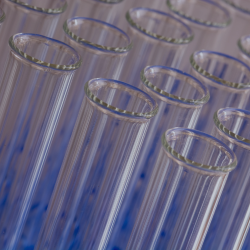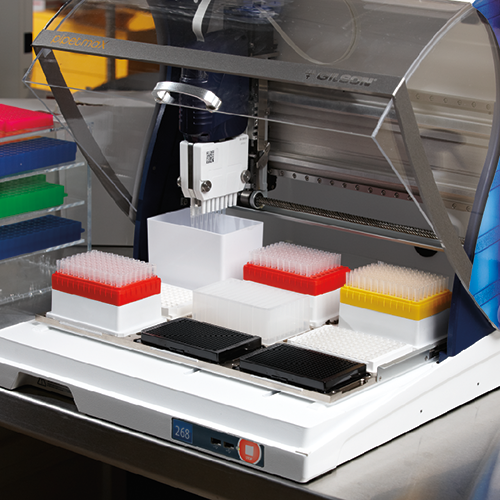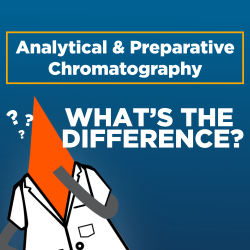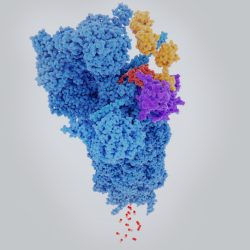Post-extraction cleanup methods are commonly used in residue analysis workflows. Residue analysis samples need to be processed so co-extracted interferents can be removed before analysis. Post-extraction cleanup methods vary and the choice of method can depend on many circumstances: the type of sample, type of analyte, and regulatory requirements. Regardless of the method, the ultimate goal is to remove co-extracted contaminants before analysis.
This article focuses on two chromatography based methods for post-extraction cleanup: gel permeation chromatography (GPC) and solid phase extraction (SPE).
Three Differences Between GPC and SPE
1. Principle of Separation
While both methods use a chromatographic column to separate molecules of interest from co-extracted impurities, the mechanisms are different.
GPC separates based on size. The fundamental mechanism involves using porous beads with a defined pore size as a stationary phase and an isocratic mobile phase to push the sample through the column. Larger molecules exit the column first as they cannot traverse through the pores, while smaller molecules enter the pores and elute later.
In contrast, cleanup using SPE is based on the affinity between the stationary phase and the compounds of interest. Several mechanisms can be used, including adsorption/partitioning, ion exchange, and a combination thereof. SPE is a multi-step process where the extract is loaded on the column and analytes of interest bind the stationary phase while the non-retained impurities are discarded. After a washing step to remove remaining interferents, the analytes are eluted in a small volume of pure solvent.
Both techniques have the same objectives, namely to improve the reliability of analytical results while preserving analytical systems, but each has its own advantages:
- GPC is a very simple single step post-extraction cleanup technique. Without any interactions between beads and analytes and its high capacity of loading in mass, analyte loss is minimized. However, to be effective, a large difference in size between impurities and analytes is required.
- SPE is less simple due to its multi-step workflow but is applicable to numerous sample types thanks to a wider choice of available mechanisms. SPE requires a lower quantity of solvent, can concentrate the analyte, and can reduce the time spent on downstream steps such as evaporation.
2. Samples and Analytes
Different sample types require different post-extraction cleanup methods or a combination of them. For example, extracts rich in high molecular weight impurities such as fatty substances are typically cleaned with GPC, and to further improve the cleanup efficiency, an additional SPE can also be performed before residue analysis.
The use of SPE or GPC for post-extraction cleanup depends on many factors, including upstream factors such as sample matrix, analytes of interest, solvents used for extraction and downstream factors, the sensitivity and selectivity of the analytical system.
However, for labs performing residue analysis, local regulations often dictate the post-extraction cleanup method according to the sample type. The method used is not always the same across countries.
3. Equipment Required
GPC requires liquid chromatography equipment (e.g., injector pump, fraction collector, optional detector, etc.), while SPE requires only liquid handling equipment. Some instruments, such as Gilson’s GX-271 Liquid Handler, can be used to automate both SPE and GPC.
| Basis of Separation |
Molecular size |
Affinity, size, ion exchange, polarity |
| Column material |
Porous material made of polystyrene and silica with various pore sizes and diameters |
Solid phase sorbent made of silica, alumina, carbon, or polymer-based resin |
| Concentrates sample |
No |
Yes |
| Column |
Reusable |
Single-use |
| Equipment |
LC equipment (ex: pump, detector, etc.) |
Liquid handling equipment |
| Able to Automate |
Yes |
Yes |
SPE and GPC All-in-One Platform
The current trend in post-extraction cleanup equipment is versatility. Gilson’s GX-271 Liquid Handler can be used for different post-extraction cleanup methods including SPE and GPC as well as other liquid handling tasks and comes with the benefits of automation. For labs that analyze multiple sample types, a multi-functional instrument is key to reducing the need for multiple instruments with singular purposes. This flexibility also means that labs can increase efficiency, perform multiple types of analyses, decrease capital costs, and improve data quality by incorporating multiple techniques into one instrument.
GX-271 Liquid Handler
The GX-271 Liquid Handler offers a small footprint, medium capacity liquid handler and autosampler offers small-to-large volume injection, fraction collection, and liquid handling capabilities. Its optional dynamic syringeless pumping system is capable of delivering microliters to hundreds of milliliters, with no change in hardware.
Learn More



























